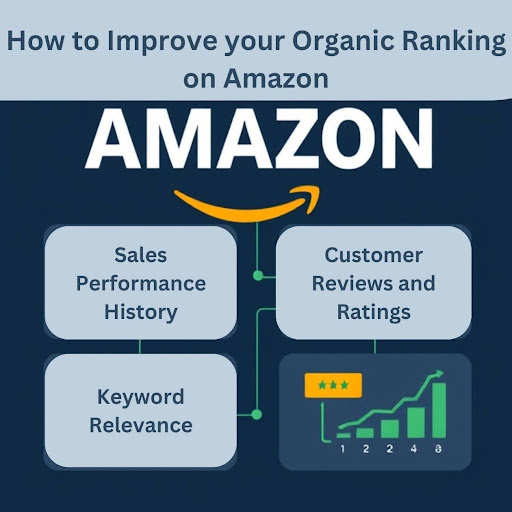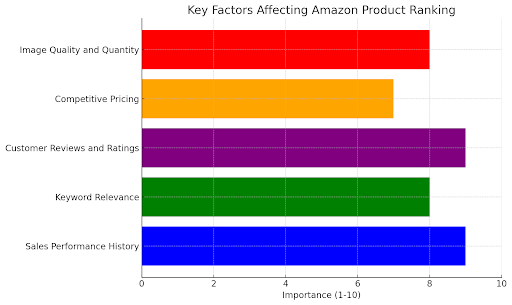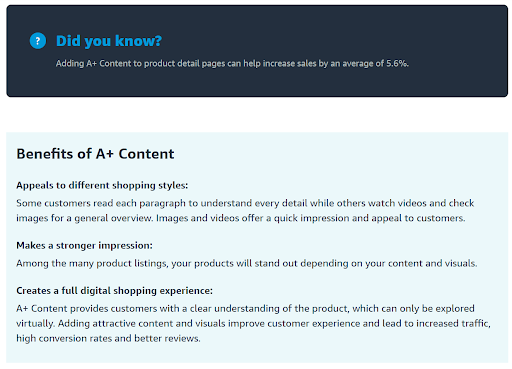How to Improve Organic Ranking on Amazon in Q1 2025

Introduction to Amazon Organic Ranking
As an Amazon seller, improving your product's organic ranking is crucial to maximize visibility and attract potential buyers. Amazon's platform is highly competitive, and understanding how its ranking system works can be the key to achieving success. The foundation of ranking higher lies in optimizing your product listings and taking advantage of the various tools Amazon offers to improve organic visibility.
Amazon ranks products based on how well they meet customer intent and drive sales, focusing on a range of factors including listing optimization, sales history, customer reviews, and keyword relevance. In this guide, we'll discuss the important strategies for improving your product ranking, from optimizing your product detail page to incorporating effective keywords.
Understanding Amazon's A10 Algorithm
Amazon uses its proprietary algorithm, known as A10, to decide the order in which products are displayed in search results. Unlike traditional search engines that may have varied reasons behind searches, Amazon assumes that every search has a purchasing intent. Therefore, Amazon's A10 algorithm is designed to prioritize product listings that best meet that intent.
The A10 algorithm evaluates several factors:
-
Sales Performance History: Listings with a high conversion rate and strong sales history are rewarded by Amazon.
-
Keyword Relevance: Amazon analyzes product titles, bullet points, descriptions, and backend search terms for relevant keywords.
-
Customer Reviews and Ratings: High ratings and positive reviews indicate product quality and improve ranking.
-
Pricing and Competitive Position: Competitive pricing is crucial, as Amazon rewards value.
-
Image Quality: Clear, high-quality images are essential for attracting customers and improving rankings.
Key Factors Affecting Amazon Product Ranking

Sales Performance History
A strong sales performance is a significant indicator that a product meets customer needs. Products with consistent and high sales volume tend to rank better.
Keyword Relevance
Keyword relevance is key to ensuring that your product appears in the right search queries. Including relevant keywords in your product titles, descriptions, and backend terms improves your listing's chances of being shown to interested shoppers.
Customer Reviews and Ratings
Products with numerous positive reviews tend to rank better, as they are viewed as more trustworthy by potential buyers. Encouraging reviews and maintaining high ratings can positively impact ranking.
Competitive Pricing
Pricing plays a major role in determining product visibility. Amazon values competitively priced products that offer value, which helps in achieving better rankings.
Image Quality and Quantity
High-quality images that showcase the product from multiple angles contribute significantly to conversion rates, ultimately helping in improving rankings. Amazon suggests using high-resolution images that clearly display product details.
Optimizing Amazon Listings for Better Visibility

To improve your Amazon ranking, optimizing product listings is a must. Listings should include all relevant information and be formatted in a way that appeals to both Amazon's algorithm and human shoppers. The following aspects are key:
Product Title
Your product title is one of the most crucial components of your listing. The title should include the primary keyword and concisely describe the product. While Amazon allows up to 200 characters for the product title, the first few words are the most important as they are the first things a shopper sees.
Key Product Features
Amazon provides up to 1,000 characters for bullet points under the key product features. This section should highlight the main benefits of your product in a clear, readable format. Be sure to include important keywords while focusing on customer needs.
Product Description
The product description allows you to elaborate on the product features and include long-tail keywords that may not have been used in the title or bullet points. The language here should be customer-friendly and help build a narrative that connects with potential buyers.
Importance of Keywords and Listing Content
Keyword research is the foundation of ranking higher on Amazon. Understanding what customers are searching for helps you determine the terms you need to include in your listing. Here are the steps to ensure proper keyword integration:
-
Create a List of Seed Keywords: Start with short phrases that describe your product. Use tools like Amazon's autocomplete suggestions to expand this list.
-
Use Keyword Tools: Tools like Jungle Scout and Helium 10 can provide data on search volumes, related keywords, and competitive insights.
-
Incorporate Keywords Naturally: Keywords should be used in a way that reads naturally to customers. Keyword stuffing should be avoided as it can negatively impact readability and ranking.
Leveraging Backend Optimization
Backend optimization involves using the backend search terms to enhance the relevance of your product listing. It allows you to provide additional information that may not fit in the visible listing content.
However, it is crucial not to misuse this space by adding irrelevant keywords. Amazon penalizes listings that use unrelated or deceptive keywords in their backend search terms. Use only those keywords that genuinely add value to your listing.
The Role of Amazon A+ Content

Amazon A+ Content offers brand-registered sellers the ability to enhance their product listings with more engaging images, detailed descriptions, and other media. Including A+ Content helps to increase conversion rates by making listings more compelling and visually engaging.
Key benefits include:
-
Higher Conversion Rates: A+ Content allows for a better presentation of product features, leading to increased customer confidence.
-
Improved Sales Velocity: As A+ Content boosts conversion rates, it also improves sales velocity, which positively impacts ranking.
Effective Keyword Strategies for Organic Growth
To boost your organic ranking, focus on a keyword strategy that aligns with customer search intent:
-
Manual vs. Automatic Targeting: Amazon allows sellers to choose between manual and automatic targeting in ad campaigns. Automatic targeting can be useful for discovering effective search terms.
-
Keyword Match Types: Understand different match types (Broad, Phrase, Exact, and Negative) to refine which searches trigger your ads, thereby improving click-through rates and conversions.
-
Use Negative Keywords: Negative keywords help prevent your ads from appearing in irrelevant searches, saving you ad spend and maintaining your conversion rate.
Conclusion
Improving organic ranking on Amazon requires a combination of strategic listing optimization, effective keyword research, and leveraging Amazon’s tools like A+ Content. By focusing on relevant keywords, enhancing customer experiences, and providing well-optimized content, sellers can increase their chances of appearing at the top of search results. Consistent effort, understanding of Amazon’s ranking factors, and adapting to customer needs are key to achieving sustainable success on the platform.
If you need personalized guidance or help fine-tuning your strategies, Superfuel AI can assist. Our AI-powered assistant analyzes 36+ key Amazon metrics to identify and address the root causes of sales fluctuations, helping you optimize your storefront and boost sales. Reach out to us at [email protected].
--
Ben Mathew, Amazon Expert
Ben Mathew is a co-founder at Superfuel, a sales assistant for Amazon sellers. In the past, Ben and his team of e-commerce specialists and software engineers have launched 40+ new brands on Amazon, taking them from zero to bestsellers. In his free time, he is either learning from other top sellers or encouraging his 3 daughters in their love for reading. He is reachable at ben [at] superfuel.io.
FAQ
1. How does Amazon's A9 Algorithm work?
Amazon's A9 algorithm ranks products based on sales performance, keyword relevance, customer reviews, pricing, and image quality. Its primary goal is to match customers with products they are most likely to purchase.
2. What factors impact my Amazon product ranking the most?
Key factors include sales performance history, keyword relevance, customer reviews, competitive pricing, and high-quality images. All of these contribute to improving a product's visibility.
3. How can I optimize my product title for better ranking?
Include primary keywords in the title and keep it concise. The first 5-10 words are the most crucial, as they directly impact search results and customer clicks.
4. What is backend optimization, and why is it important?
Backend optimization involves using backend search terms to enhance listing relevance. It allows sellers to provide additional, less visible keywords that boost search visibility without cluttering the listing.
5. How does Amazon A+ Content benefit my listing?
A+ Content allows sellers to enhance product descriptions with engaging images, videos, and detailed text, increasing conversion rates and sales velocity, ultimately improving product ranking.
6. What are keyword match types, and how do they affect organic growth?
Keyword match types (Broad, Phrase, Exact, and Negative) dictate how closely a search term must match your keywords for ads to appear. Choosing the right match type helps ensure ads reach relevant audiences, improving click-through and conversion rates.
7. How can I use negative keywords effectively?
Negative keywords prevent ads from appearing in irrelevant searches, helping to maintain a high conversion rate by avoiding clicks that are unlikely to lead to a sale.
8. What role do customer reviews play in Amazon ranking?
Customer reviews signal product quality and trustworthiness. Products with numerous positive reviews tend to rank higher, as they are viewed more favorably by both Amazon's algorithm and potential customers.